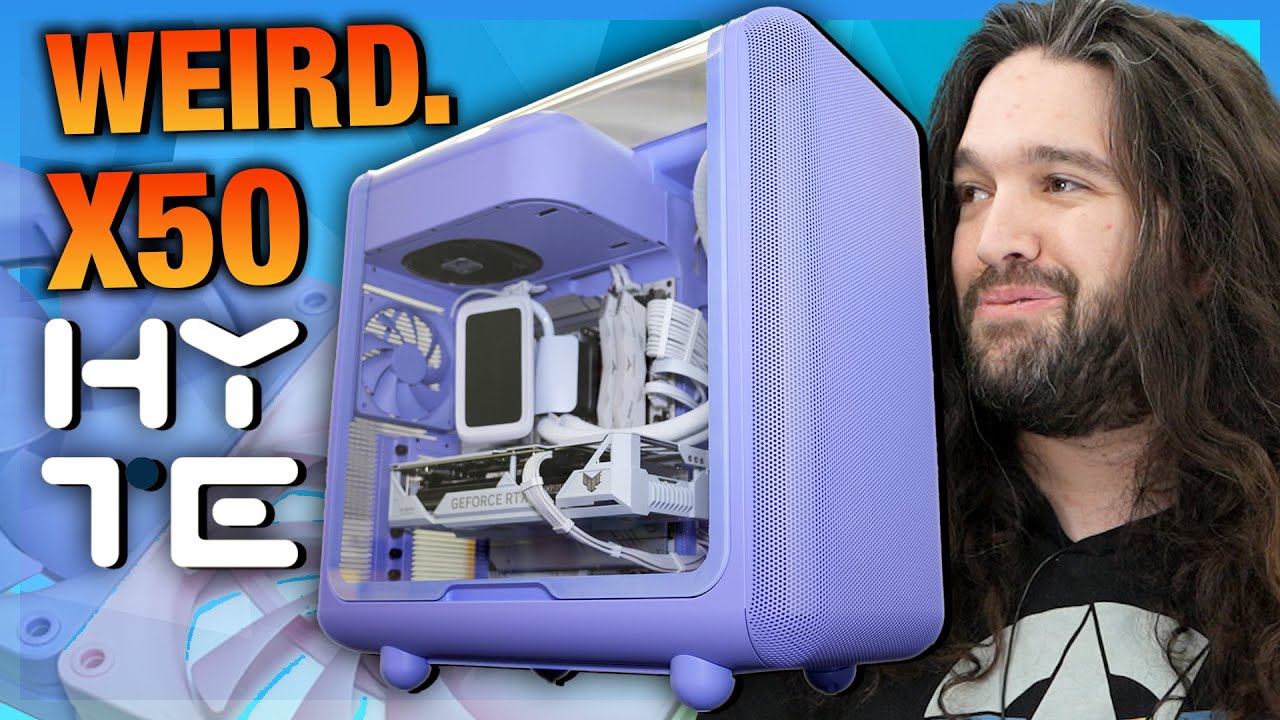The video showcases Hyte’s “Impossible” X50 Ultra-High Airflow Case at Computex 2025, highlighting its innovative design, extensive perforated panels, and advanced manufacturing challenges, including forming complex steel curves and intricate vents. Despite high costs and technical hurdles, the collaboration with manufacturing partners has enabled the creation of a unique, high-performance case that balances aesthetics, airflow, and structural integrity.
The video showcases Hyte’s “Impossible” X50 Ultra-High Airflow Case at Computex 2025, featuring a detailed look at its unique design and manufacturing challenges. The presenter highlights the case’s external appearance, noting its unconventional shape and extensive perforated metal panels, primarily made of steel. The case emphasizes performance with multiple fan slots and optimal ventilation, including side intake options and a heavily ventilated front panel, designed to improve airflow and thermal performance. The case is available in various colors, with a focus on high-quality, thick materials like 4mm laminated acoustic glass for the side panels, which aim to enhance both aesthetics and structural integrity.
A significant part of the discussion revolves around the manufacturing complexities involved in creating the case. Rob explains the difficulties of stamping and forming compound curves out of steel, emphasizing the slow, precise processes required, such as hydraulic presses and deep draw stamping. The team experimented with different materials, including stainless steel and softer metals, to balance formability and durability, often facing issues like tearing, oxidation, and cost. The design also incorporates intricate features like louvered vents, which are challenging to produce but add to the case’s structural strength and aesthetic appeal, marking a notable breakthrough in manufacturing capabilities.
The video delves into the detailed process of prototyping and testing numerous panels, many of which were unsuccessful due to manufacturing limitations. The team experimented with laser-cut meshes, stamped steel, and welded pieces, often facing issues like tearing, rusting, and tolerances that prevented achieving the desired design. Rob shares insights into the trade-offs between material choices, such as reducing nickel and chromium to prevent tearing but risking oxidation, and the iterative process of refining the panels to meet both aesthetic and functional goals. The final design features stamped and folded mesh panels with integrated clips, balancing manufacturability with performance.
Rob also discusses the high costs associated with manufacturing, especially for parts like grommets, which are expensive due to their tight tolerances and aesthetic qualities. He highlights the challenges of producing complex features like the louvered vents and perforated panels, which require specialized machinery and slow, precise processes. Despite these hurdles, the factory’s willingness to undertake difficult manufacturing tasks has enabled the creation of innovative features that were previously thought impossible, showcasing the importance of strong manufacturing relationships and perseverance in pushing design boundaries.
In conclusion, the video provides an in-depth look at the technical and logistical hurdles in producing the X50 case, emphasizing the combination of innovative design and manufacturing expertise required. The team aims to keep the case’s price around $120-$150, though final costs depend on factors like tariffs and material choices. The presenter hints at upcoming coverage from Computex, promising more behind-the-scenes insights and updates on the product’s development. Overall, the X50 represents a significant achievement in high-performance, high-airflow case design, made possible through extensive experimentation and collaboration with manufacturing partners.
